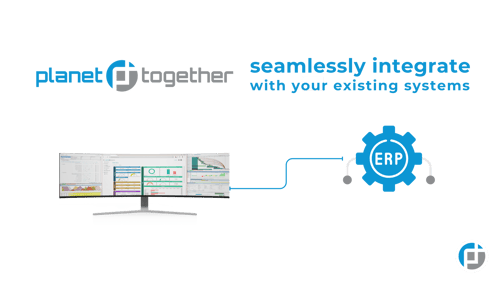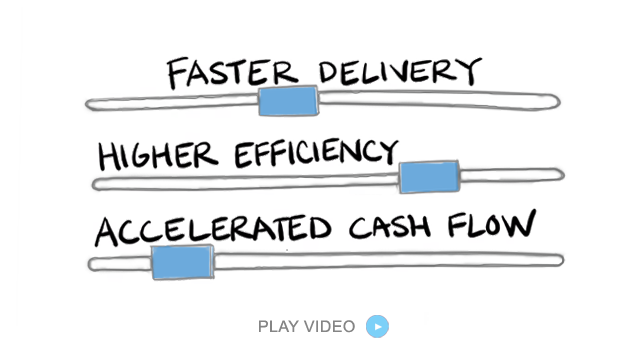Strategic Operations in Medical Manufacturing: Overcoming Rising Costs through Intelligent Planning and Integration
Medical manufacturing has always operated under tight margins and intense scrutiny—both regulatory and operational. But in recent years, the challenges have intensified. From global inflationary pressures and volatile raw material prices to labor shortages and rising compliance costs, operations directors are tasked with navigating an increasingly complex and expensive landscape.
In this climate, success hinges on one thing: an agile, data-driven operations strategy. Forward-thinking manufacturers are shifting from traditional cost-cutting measures to integrated, intelligent planning systems that enable proactive decision-making and long-term resilience. Among the most effective tools supporting this transformation is PlanetTogether Advanced Planning and Scheduling (APS)—especially when integrated with leading enterprise systems like SAP, Oracle, Microsoft Dynamics, Kinaxis, or Aveva.
This blog explores how Operations Directors in medical manufacturing can adapt and thrive in the face of rising costs by rethinking their operations strategy and leveraging system integration for smarter planning.
Understanding the Cost Pressure Landscape
Let’s take a closer look at the root causes of rising operational costs in medical manufacturing:
Raw Material Volatility: Prices for medical-grade plastics, metals, and specialized components have fluctuated significantly.
Labor Shortages: The global labor market remains tight, especially for skilled technicians and engineers, driving wages up.
Energy and Utilities: With sustainability mandates on the rise, so too are the investments in cleaner energy—which can mean upfront cost spikes.
Regulatory Compliance: Increased scrutiny, especially post-COVID, means greater investment in traceability, documentation, and quality assurance.
These rising costs aren’t temporary blips—they’re structural changes. And reactive cost-cutting simply won’t cut it anymore. The winning approach is to strategically align operations to anticipate, absorb, and even capitalize on these changes.

The New Playbook: From Cost Reduction to Strategic Optimization
Real-time Visibility and Scenario Planning
With costs escalating unpredictably, real-time data becomes invaluable. Operations Directors must be able to:
Monitor production efficiency,
Evaluate supplier performance,
Simulate “what-if” cost scenarios.
PlanetTogether APS, when integrated with systems like SAP, Microsoft Dynamics, or Oracle, enables real-time visibility across your entire supply chain and shop floor. Through this integration, planners and operations leaders can dynamically adjust production schedules based on updated cost projections, customer orders, or equipment downtime.
Example: Suppose there's a sudden 20% increase in the cost of a key raw material. Through integrated planning, you can simulate scenarios: shift production to SKUs with lower material consumption, re-sequence work orders, or pre-buy inventory based on demand forecasts—all within a unified platform.
Capacity Utilization and Labor Efficiency
In medical manufacturing, idle capacity and labor inefficiency are hidden cost drivers. A misalignment between production planning and real-world constraints can result in:
Overtime and underutilization in the same shift,
Bottlenecks in cleanroom availability,
Excessive changeover times due to poor sequencing.
When PlanetTogether is integrated with Aveva's MES or Kinaxis’ demand planning, you gain real-time synchronization between demand signals, production capacity, and labor availability. This allows for leaner operations and precise labor planning.
Supplier and Inventory Optimization
Many operations teams hold excess inventory as a hedge against disruptions—but that ties up working capital and increases storage costs. Conversely, lean inventories without visibility can cause line stoppages.
With PlanetTogether integrated with Oracle or SAP, you get tighter control over supplier delivery schedules and inventory buffers. You can synchronize supplier lead times with production windows, minimize obsolescence, and better manage high-value inventory like sterile or serialized components.

Making the Business Case for Integration
For Operations Directors looking to make a compelling business case for APS integration, here’s a simplified ROI framework:
| Benefit | Estimated Savings/Impact |
|---|---|
| Improved Scheduling Efficiency | 10–15% reduction in overtime |
| Inventory Optimization | 5–10% reduction in carrying costs |
| Fewer Production Disruptions | 20–30% fewer delays from stockouts |
| Faster Response to Market Shifts | Reduced waste and fewer emergency runs |
| Cross-team Visibility | More effective meetings and faster decisions |
Multiply those percentages by your annual operating budget, and you’re looking at a significant and measurable financial impact.
Key Enablers of a Resilient Operations Strategy
To adopt this proactive and cost-conscious operations strategy, consider focusing on the following:
System Integration: Ensure your APS (PlanetTogether) is tightly integrated with your ERP (SAP/Oracle/Microsoft), MES (Aveva), and demand planning tools (Kinaxis).
Cross-functional Collaboration: Bring together procurement, planning, quality, and maintenance under a unified scheduling framework.
Data Governance: Trustworthy data is essential. Clean up master data and establish governance to avoid planning errors.
Continuous Improvement Culture: Use the visibility offered by integrated platforms to track KPIs and promote ongoing improvement.
In an environment where costs will continue to rise—and regulatory expectations won’t ease—the real risk is inertia. Companies that fail to modernize their operations strategy will find themselves perpetually behind: reacting to delays, scrambling for inventory, and justifying shrinking margins.
But for those who invest in integrated planning and strategic operations, the path forward is clear: greater agility, lower costs, and a more resilient foundation to scale and innovate.
As an Operations Director in medical manufacturing, your mandate goes far beyond just keeping the production lines running. You’re tasked with balancing cost, compliance, and capacity—all while enabling innovation and growth. Rising costs are not a barrier—they’re a call to action.
By embracing tools like PlanetTogether APS, and ensuring seamless integration with SAP, Oracle, Microsoft, Kinaxis, or Aveva, you can transform operational challenges into competitive advantages. Now is the time to move from reactive planning to intelligent operations—where every dollar, hour, and resource is optimized.
Interested in seeing how integration between PlanetTogether and your ERP/MES environment can reduce costs and drive efficiency?
Let’s set up a demo and explore how you can modernize your operations strategy today.
Topics: PlanetTogether Software, Integrating PlanetTogether, Medical Manufacturing, Real-time Visibility and Scenario Planning, Supplier and Inventory Optimization, Capacity Utilization and Labor Efficiency





















LEAVE A COMMENT